18+ Sample Compromise Agreements
-

Simple Compromise Agreement
download now -
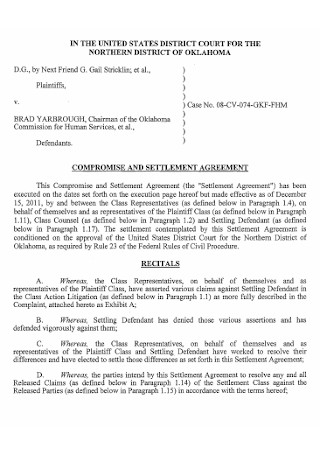
Compromise and Settlement Agreement
download now -

Compromise and Settlement Release Agreement
download now -
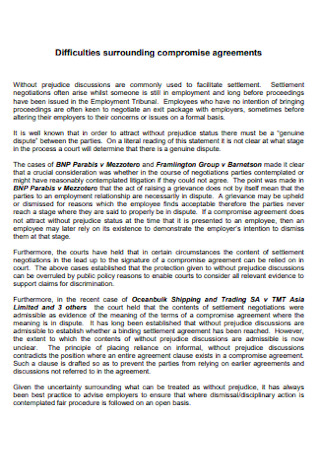
Difficulties Surrounding Compromise Agreements
download now -
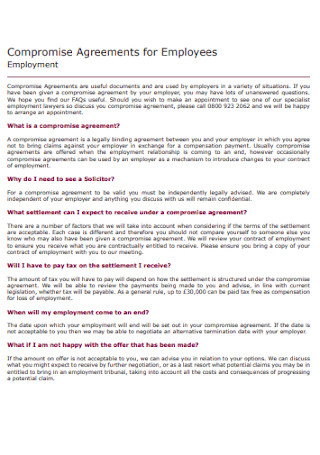
Compromise Agreements for Employees
download now -
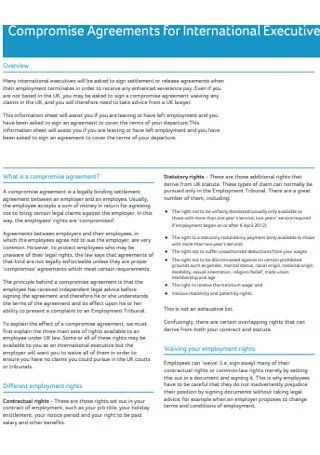
Compromise Agreements for International Executives
download now -

Decision Based on Compromise Agreement
download now -
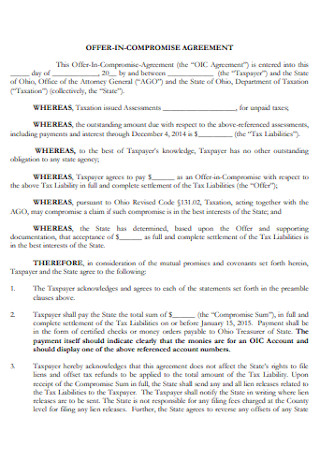
Offer in Compramise Agreement
download now -

Concerning Compromise Agreement
download now -
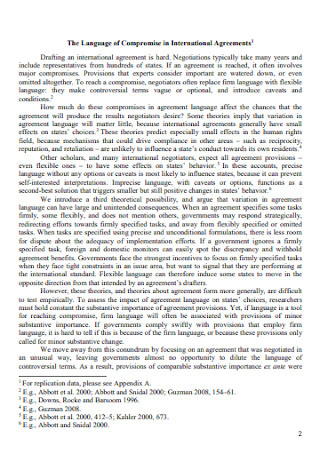
Language of Compromise in International Agreement
download now -
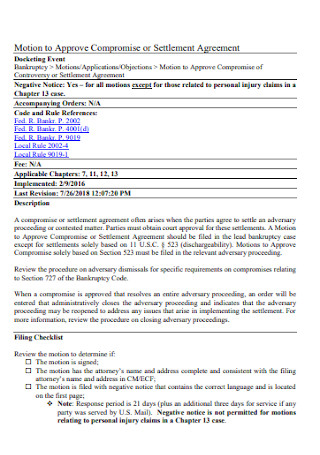
Motion to Approve Compromise Agreement
download now -
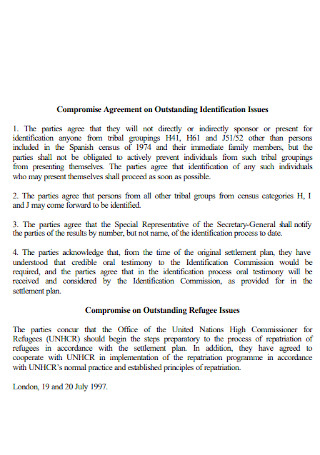
Compromise Agreement on Outstanding Issues
download now -

Standard Compromise Agreement
download now -
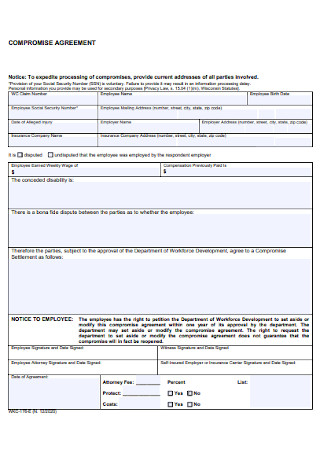
Workers Compromise Agreement
download now -
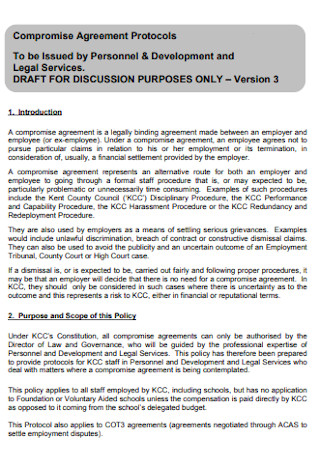
Compromise Agreement Protocols Template
download now -
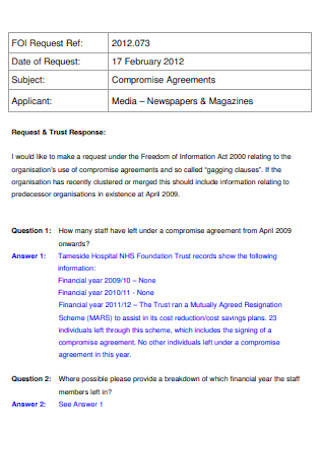
Formal Compromise Agreement
download now -
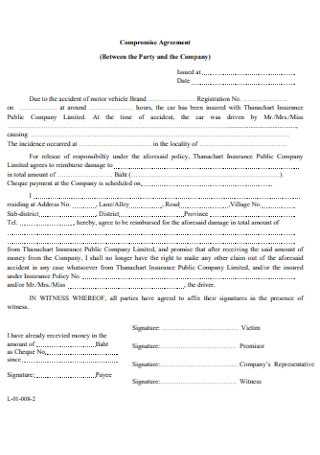
Company Compromise Agreement
download now -
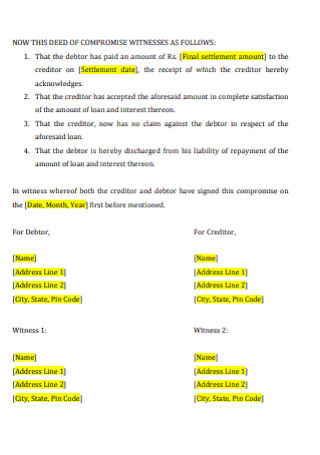
Debt Compromise Agreement
download now -

Employment Compromise Agreement
download now
FREE Compromise Agreement s to Download
18+ Sample Compromise Agreements
What Is a Compromise Agreement?
What Types of Provisions can a Compromise Agreement Include?
What Is the Difference Between a Compromise Agreement and a Settlement Agreement?
Why Is There a Change Between the Two Agreements?
Which Types of Claim can be Settled by a Compromise Agreement?
What Is the Benefit of Compromise Agreement?
When Is a Compromise Agreement Needed?
Elements of a Compromise Agreement
How to Write a Compromise Agreement
FAQs
Which types of claims cannot be settled by a compromise agreement?
How to write a letter of compromise for debt settlement?
How can I increase the amount of my compromise agreement?
What Is a Compromise Agreement?
A Compromise Agreement is an arrangement reached between an employer and an employee. It is a sort of legally binding contract that is governed by statute and frequently drafted by solicitors. The employee may be a present employee or may have previously worked for the organization or business. Compromise Agreements provide an employee with compensation, typically financial, in exchange for agreeing to settle and forgo any prospective claims they may have against their company. Beyond remuneration, consideration might include other tangible benefits, such as a reference letter that is often positive or neutral in tone.
Other templates are available on our website, and you can use them whenever you need them. They are as follows: marital settlement agreement, employment contract, work contract, labor contract, position agreement, payment agreement, divorce settlement agreement, IT contract, permanent employment contract, family settlement agreement, disclosure agreement, and other similar templates are available. This post will not only provide you with templates but will also provide you with important information that you need to know in order to complete your template.
What Types of Provisions can a Compromise Agreement Include?
Apart from meeting the legal requirements, the substance of a Compromise Agreement is flexible and can be tailored to reflect the particular circumstances of the parties, as well as the terms they wish to establish. In a Compromise Agreement, common clauses include a payment to the legal fees for the mandated advice that the employee is required to get; nevertheless, the most important clause is typically the compensation for loss of employment. A condition stating that the specified claim is the only one that the employee has brought against the employer, as well as a promise to offer a positive or, at the very least, a neutral reference for future job opportunities, may also be included.
What Is the Difference Between a Compromise Agreement and a Settlement Agreement?
The Enterprise and Regulatory Reform Act of 2013 altered the term ‘Compromise Agreement’ to ‘Settlement Agreement,’ replacing it with the term ‘Settlement Agreement.’ This was more than just a cosmetic adjustment; other aspects of the law governing Compromise Agreements were altered as well as this one. A number of other legislative amendments were enacted by the United Kingdom government, which essentially permitted employers and employees to conduct protected conversations in order to make a conclusion on the terms and scope of any possible Agreement. To refer to the process and the subsequent documentation, the terms “Compromise Agreement” and “Settlement Agreement” are still used interchangeably to refer to the two documents.
Why Is There a Change Between the Two Agreements?
Previously, a Compromise Agreement permitted an employer to engage in a ‘without prejudice’ dialogue with an employee if the scenario lacked various features such as fraud, undue influence, or what was referred to as ‘unambiguous impropriety,’ i.e. blackmail or perjury. These discussions and agreements prior to terminating employment cannot be used as evidence in a subsequent employment tribunal proceeding. The new legislation eliminated this provision of the prior Compromise Agreement and replaced it with ‘confidential’ pre-termination negotiations in acknowledgment of the reality that there are times when the employer and employee are not in conflict but seek to reach a negotiated settlement.
Previously, a present employment dispute had to be a trigger for the creation of a Compromise Agreement and for the negotiations to be ‘without prejudice. Essentially, the goal is to broaden and expand the concept. Thus, the new Settlement Agreements will enable employers and employees to engage in pre-termination negotiations at a time when no apparent disagreement exists, and without fear of the content of these discussions being used as evidence in a subsequent tribunal case.
Which Types of Claim can be Settled by a Compromise Agreement?
Using a Compromise Agreement, you can regulate a wide variety of statutory claims, such as discrimination and victimization, or regulate any sort of harassment based on sexual orientation or gender identity. Using a Compromise Agreement can also be beneficial in cases of unjust dismissal, pregnancy and maternity-related discrimination or prejudice, and other similar matters.
What Is the Benefit of Compromise Agreement?
The advantage of engaging in a compromise agreement for employers is that the disagreement is brought to a close as soon as possible. In some circumstances, the time lost, internal costs incurred, and dangers associated with fighting a subject may be insufficient to justify going to court. By agreeing to pay a specific sum of money to settle an employee’s claim, a corporation can reduce its exposure to risk and reduce its losses (or ex-employee). When an employee agrees to settle a claim, he or she gains significant benefits.
Employees frequently receive a quantity of money in exchange for agreeing to settle previous and current claims, which is standard procedure in the industry. It is also common for employees to receive a reference letter that allows them to continue working for other firms and seeking new career chances. The use of Compromise Agreements can be used to regulate a wide variety of statutory claims, such as discrimination and victimization, and they can also be used to regulate any type of harassment based on sexual orientation or gender identity. A Compromise Agreement can also be advantageous in situations such as wrongful dismissal, pregnancy, and maternity-related discrimination or prejudice, and other comparable situations.
When Is a Compromise Agreement Needed?
If an employee and his or her employer have several statutory causes of claim against each other, a compromise agreement may be required. It is possible for an individual to have valid reasons to submit a claim against a firm for a variety of reasons. A claim may emerge during the recruitment process, during an employee’s employment, or in the context of a person’s termination from his or her position. The corporation may elect to resolve the case by entering into a compromise agreement if allegations of a claim are brought to the attention of the company. A comprise agreement will not be effective in resolving some types of claims, including personal injury claims, pension-related claims, and business transfer issues, depending on the country in which the claim is filed.
Elements of a Compromise Agreement
A mutual agreement to bring disputed issues to arbitrators for resolution. A settlement obtained by arbitration or mutual concessions on both sides; a reciprocal renunciation of extreme demands or rights that results in an agreement. When parties are negotiating various problems, more compromises may be made. The essential premise is that each side foregoes something that the other party values but are unimportant to them.
How to Write a Compromise Agreement
A compromise agreement must be in writing, identify a valid relevant independent adviser,’ detail the employee’s probable claims, and be signed by the employee following consultation with the relevant independent adviser. If you are an employer considering drafting a compromise agreement, ensure that you negotiate favorable but fair terms, draft the agreement in accordance with your negotiations, and execute the agreement. The simplest and most cost-effective method of accomplishing this is to draft the agreement yourself.
-
Step 1: Outline the Agreement
Identifying the parties to your compromise agreement, the date on which the agreement was entered into, and the basic facts surrounding the need for the agreement should all be included in the first section of your compromise agreement.
-
Step 2: Lay Out the Terms of Termination
Your Termination Clause will be the first substantive clause in your contract. This will outline the procedure that will be followed in terminating the employee. Employees should be informed of their termination date as well as how they will be compensated and receive benefits up until the termination date, according to the company policy.
-
Step 3: Include Particular Employee Complaints
You must establish the specific grievances your employee has against you in order for your compromise agreement to be effective. For example, you could file a claim for redundancy or unjust dismissal.
-
Step 4: Include Payments and Compensation
In most cases, the amount of remuneration you choose to give the employee is not dictated by law. Your agreement on this number must be reached between you and your employee, and the agreed-upon sum should be stated in your agreement. In most cases, the amount of compensation awarded will be determined by the length of the employee’s employment, the reason for the dismissal, and your financial status as a whole.
-
Step 5: Specify the Legal Costs
It is standard practice for you, the employer, to pay reasonable legal fees so that the employee can consult with a qualified independent adviser on a particular issue. It is appropriate for you to agree to pay a specific amount that you believe is reasonable given the circumstances and complexity of the agreement. If the costs surpass the amount you give, you should make it clear that the employee will be responsible for the additional expenses.
-
Step 6: Include Signature Page
The final page of your agreement should include a spot for signatures and be signed by all parties. Not only will you need to provide space for your signature and the signature of your employees, but you will also need to leave space for the signature of your employee’s relevant independent advisor. This will verify that you are in compliance with the requirement that your employee consults with an attorney.
A compromise agreement is a legally enforceable contract between a business and an employee in which the employee agrees to settle any prospective claims in exchange for Cash Compensation from the employer. Occasionally, the agreement will include additional perks for the employee, such as an agreed-upon recommendation letter.
FAQs
Which types of claims cannot be settled by a compromise agreement?
Some statutory claims, such as personal injury, pension, and business transfer claims, cannot be handled by compromise.
How to write a letter of compromise for debt settlement?
Highlight the list of copies you have included in your letter. Ascertain that these documents are self-certified.
How can I increase the amount of my compromise agreement?
A qualified employment lawyer can either challenge the amount offered under the agreement and negotiate a raise or fight against it.
Employers should consider a Compromise Agreement as a beneficial tool. It is a proactive measure, not a defensive last option. Compromise Agreements provide specificity and clarity in potentially complex situations. The expansion of the legal status of Compromise Agreements is intended, in part, to fairly and practically manage the most frequent areas of conflict between employers and employees. Additionally, it has the benefit of reducing the amount of employment tribunal cases. Contact our skilled employment attorneys now to learn how employing Compromise Agreements can help your organization save time, money, and trouble.
